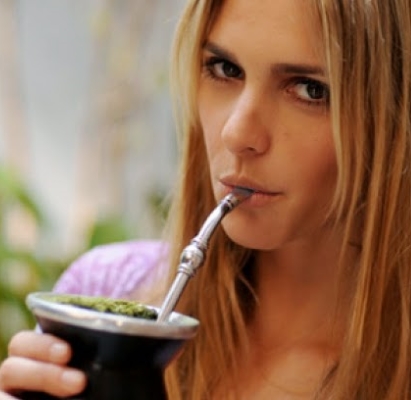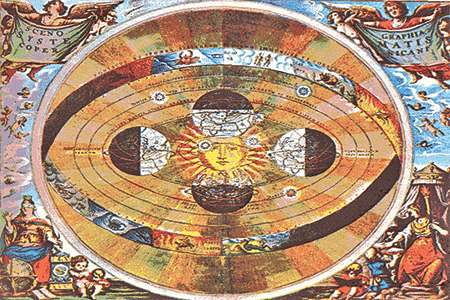All about Yerba Mate. Forms of consumption.
 |
Forms of consumption Mate is very much part of South American culture (particularly in the southern countries: Argentina, Brasil, Uruguay, Chile and Paraguay). Drinking mate is a shared encounter among friends for it is traditionally a social drink. The gourd in which it is brewed is shared in turns by people in a gathering all sipping from the same bombilla. This habit may seem unhealthy to most Europeans but it is so much part of the culture that people who would not share a glass, a cup, or any other utensil with others do not hesitate to accept a mate even from a stranger.Mate cebadoTo prepare mate, yerba is placed in a gourd (or equivalent) where hot water (a few degrees colder than boiling temperature –about 85ºC) is poured and sipped through a “bombilla” (straw with a filter). This beverage can be found in every home or even in public places as water is transported in a thermos. Just to give an indication of how widespread drinking mate is, in most service (or petro) stations on the roadside there is free provision of hot water for mate. There is, however, no restaurant, bar or tea house that would serve mate to its clients, probably for health concerns.Mate could be served unsweetened (no sugar added) or sweeten (adding small amounts of sugar with each re-fill). The” length” of the mate is given by the number of sips needed to finish all the water inside it (the end of each fill-up is announced by a particular noise made by the last drops of water entering the straw with large amounts of air). Once the mate is emptied, it is given back to the person in charge of refilling it (cebador) who is the same one through a whole session. It is not polite to re-fill the mate on your own and could even offend the cebador. This person will be in charge of deciding the turns when several people participate in a drinking session (mateada). Mate is full of meanings: once finished sipping from it, it should never be given to anyone in the session but the cebador for that brings bad lack, if it is too long it means lack of interest, if it is too hot (given to a man by a woman) it means passion, sweet mate is a sign of friendship, with cinnamon it means “I am thinking of you”, and so on.Many people add different herbs to the mate to change its flavour as well as citrus rind, coffee, tea, lemon juice, etc. The industry is now picking up on this habit and have very recently manufactured flavoured yerbas that appear with different presentations in supermarket shelves. Mate de lecheThere is also the option of using hot milk instead of water to prepare it. This is called “mate de leche” and increases the nutritional value of the beverage by adding the nutritive value of milk. The milk is warmed and sweetened or not according to taste. TereréThis is a cold version of mate particularly appreciated in Paraguay, Chaco and the north-east region of Argentina. It could be a variation of “mate cebado” that uses cold water instead of hot water or the yerba could be macerated in any other way. It is most refreshing and mainly drunk in hot summer days. Instead of water, sometimes juices are used giving it a different flavour.Mate CocidoYerba mate could also be drunk as tea – called mate cocido. Mate cocido could be prepared in a tea pot following the same procedure as with any tea, although it gives a rather weak flavour. A most traditional method is to boil the yerba in water. Fifty grams of yerba are added to 0.5 litres of water. Once it boils (minding that yerba rises when the water boils), some cold water is added to force the leaves to ‘precipitate’. The leaves are strained and the resulting infusion may be taken hot (with or without sugar), with milk (recommended for kids by the Ministry of Education), or cold as a refreshing beverage.Mate cocido can also be prepared using paper bags filled with yerba (just as teabags). This is a relatively new presentation offered by the yerba mate companies, but the flavour of the resulting infusion is less strong. |
 |
|
|
ЧЕМ ПОЛЕЗЕН МАТЭ?
• устраняет усталость, стимулируя умственную и физическую активность. • оказывает благотворный эффект на нервы и мускулы • способствует интеллектуальной работе. Благодаря основному эффекту ксантина совместно с активностью других веществ, сердечно-сосудистая деятельность дает организму силы. Ксантин оказывает всем известный эффект на центральную нервную систему, стимулируя умственную энергию. Как пьют матэ? Традиционно матэ заваривают не в чашке, а в калабасе (специальный сосуд из тыквы). В него вставляется бомбилья (напоминает тонкую ложечку с ситечком на конце). Через бомбилью пьют матэ. Употребление матэ путем пролива по-научному называется ПЕРКОЛЯЦИЯ – (максимальное извлечение активнодействующих веществ путем пролива через растительное сырье большого количества воды). Таким образом равномерно извлекается 75% полезных веществ. Тогда как при настаивании всего 35%. Надо знать, что Йерба Мате пьется только одним способом и именно путем пролива, а не настаивания.




